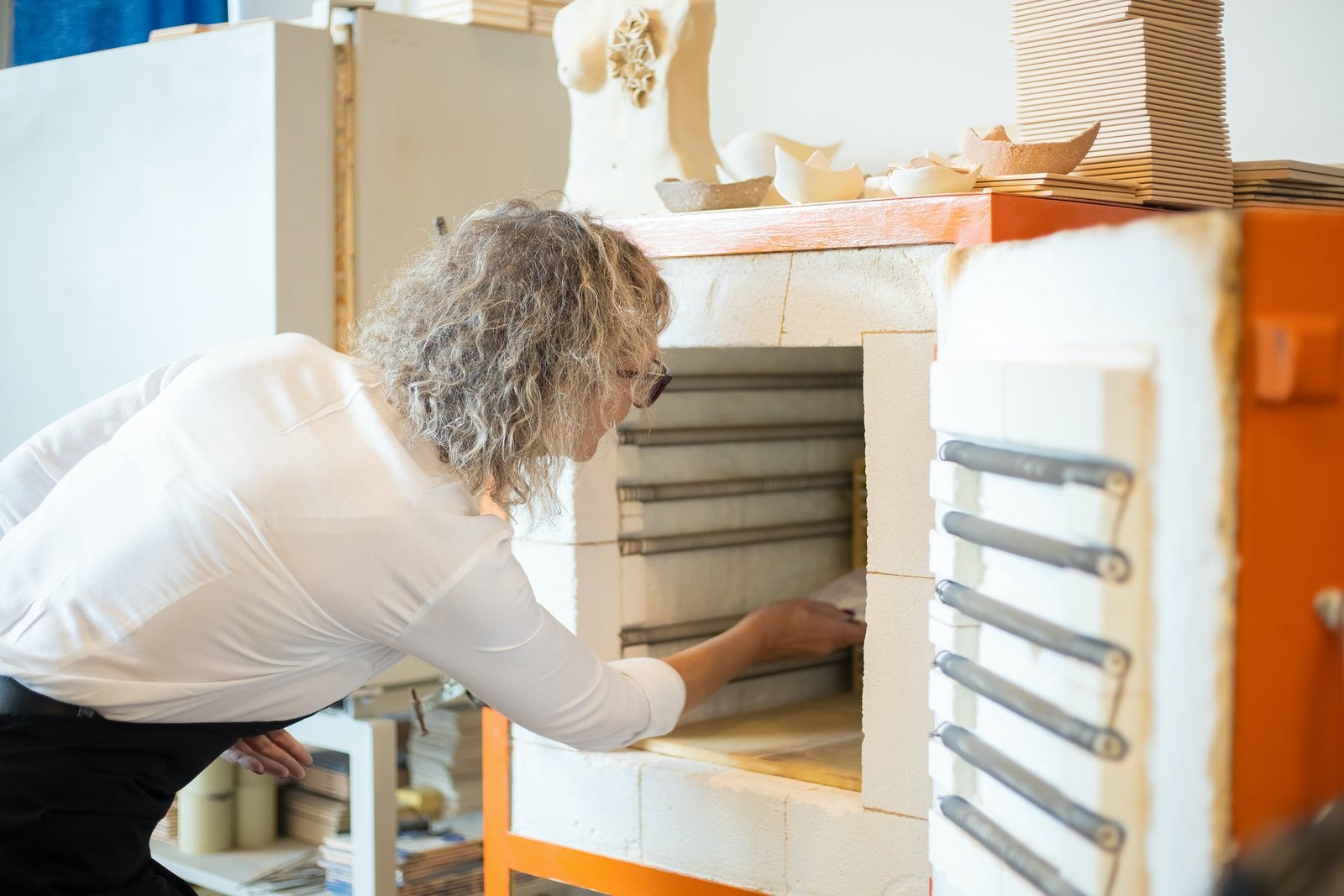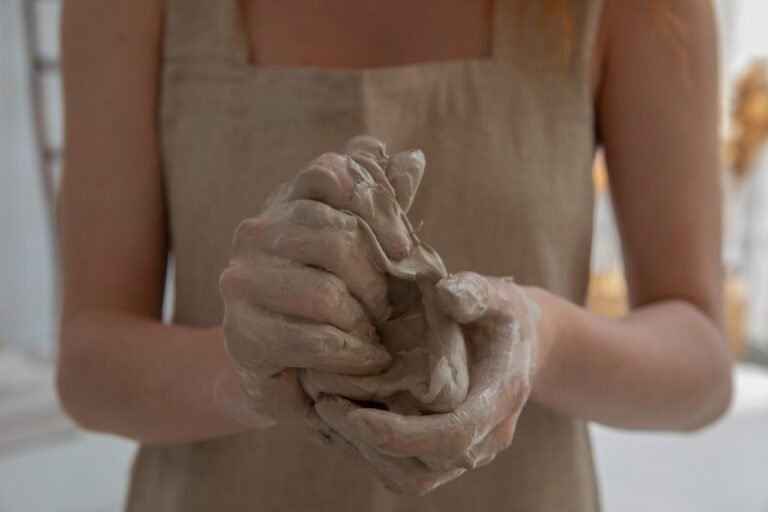Can you do clay pottery without a kiln? (Important Facts)
Pottery is considered one of the oldest human art forms and creations which dates back before the Neolithic period. This art form gets its final transformation after being burnt in a kiln, an oven made for firing, drying, and hardening clay substances. But a question remains, can clay pottery be done without a kiln?
Pottery can be done without a kiln. In fact, pottery can fully be fired without a kiln. But for outdoor firing, the temperature needs to reach at least 538 degrees Celsius. Though for the temperature, it varies for different types of clays and firing methods.
There are some other methods besides a kiln to fire pottery such as Raku firing, Pit firing, and in exceptional cases a kitchen oven too.
Now it’s important for a pottery artist to know the appropriate ways to fire pottery by following proper steps and methods be it through a kiln or other ways. A kiln is very expensive and takes a lot of space to set up, so everybody might not have the space for a kiln. And for this reason, pottery artists should enlighten themselves of the other ways to fire pottery.
Can I Bake Clay In My Oven?
Clay can be baked in the oven definitely but not quite to the perfect level. There are multiple reasons behind it. Ovens don’t produce enough heat for the clay to get processed and in high temperatures, the oven can accidentally combust and blast into pieces. Also not being careful enough the clay might shatter or melt away.
This method of using an oven to fire clay is definitely not a good option for larger-scale use but can be used for at least some experimental issues where baking is more important. The downside of using an oven to bake is that it does not generate the appropriate heat that is needed and is also limited to certain types of clay such as salt dough.
What Can I Use If I Don’t Have A Kiln?
The art of pottery is spreading heavily nowadays. And one of the important facts about pottery is how to fire it. For that reason, people are looking for more easy and suitable ways to bake and fire pottery rather than using a kiln. A kiln is not the only answer for clay pottery. Other options are also available as mentioned; Raku firing, Pit firing, etc.
Raku Firing
Raku firing is a very old and historical method of firing pottery. Through this method, very luxurious and colorful pottery can be created but this process is very technical and complicated to receive mind-blowing results.
Process of Raku Firing
Raku firing needs a very large pit area. And basically, the pit area needs to be outside, well ventilated and somewhere it is safe to light a fire and proper safety measures are maintained too. Raku firings use a barrel to house the fire and there are a few holes to assess the pottery once it has been fired. The ideal temperature of Raku firing is 760 to 980 degrees Celsius.
There are some drawbacks of the Raku firing such as:
- it takes a long time to heat up the barrels
- the Raku pit needs to be spacious wherever it may be situated
- before using the pottery, an excess amount of carbon needs to be removed from the glazed area.

Pit Firing
Another traditional process of firing clay is Pit firing. It is also known as Smoke firing. The useful facility of this process is that it can be used for glazing and not glazing the pottery upon need. It takes place in a pit or hole and also needs the same well-ventilated and safety-maintained area as the Raku firing process.
The negative aspect of the pit fire is that it is hard to maintain the constant temperature of the pit.
Process of Pit Firing
A hole is needed to be dug but with proper protection from the wind as a fire is needed to be built from wood, coal, paper, and dry leaves. The ideal temperature of the pit should reach about 980 to 1100 degrees Celsius.
After the fire is started and the desired temperature is achieved the pottery should be placed in the heat of the pit. There the pottery must be put for 12-24 hours at a stretch upon the desire of the texture and outcome of the pottery.
Firing in a Dustbin
Another innovative and nontraditional way to fire pottery is using a dustbin to start a smoke fire. It has a lot of benefits. This process is very useful for the people who do pottery out of affection and hold short space to set up a kiln.
Process of Firing in a Dustbin
As it is small, it is easy to keep at any place and to contain the fire. Fewer safety measures are needed to maintain the fire while keeping the children around. It is very easy to create.
A trash container made out of alloy is needed and make sure it has a lid attached to it. Then just lit a fire in the trash container using sawdust or wood chips and put the pottery in it. And when the fire goes below the opening of the trash container just put the lid on the opening and leave it there for 12 hours or above.
Can You Fire Clay In A Regular Oven?
Firing clay in a regular oven is theoretically and technologically not possible. Because the heat needed to fire and make the glazing can not be produced in a regular oven. The heat that is produced can be used to bake clay only as said before but not fire the clay. The temperature needed to fire the clay is far greater than that produced in a regular oven. If too much temperature is used while baking the pottery, it might become too hard and brittle.
What Happens If I Don’t Fire Clay?
Unfired clay is known as Greenware and holds moisture. It contains water in such a manner that the clay stays soft and can be molded into shapes as needed. Moisturized clay becomes brittle when it becomes dry. If the Greenware is not fired properly it will eventually crack and break apart. There is a huge difference between fired clay and non-fired clay which is almost about a 300% difference in the strength of well-fired clay and non-fired clay.
To create clay pottery and keep it in a good state and maintain the quality it is essential to put it through fire.
The fire makes the pottery shine with glaze and it makes the clay sturdy and long-lasting.







